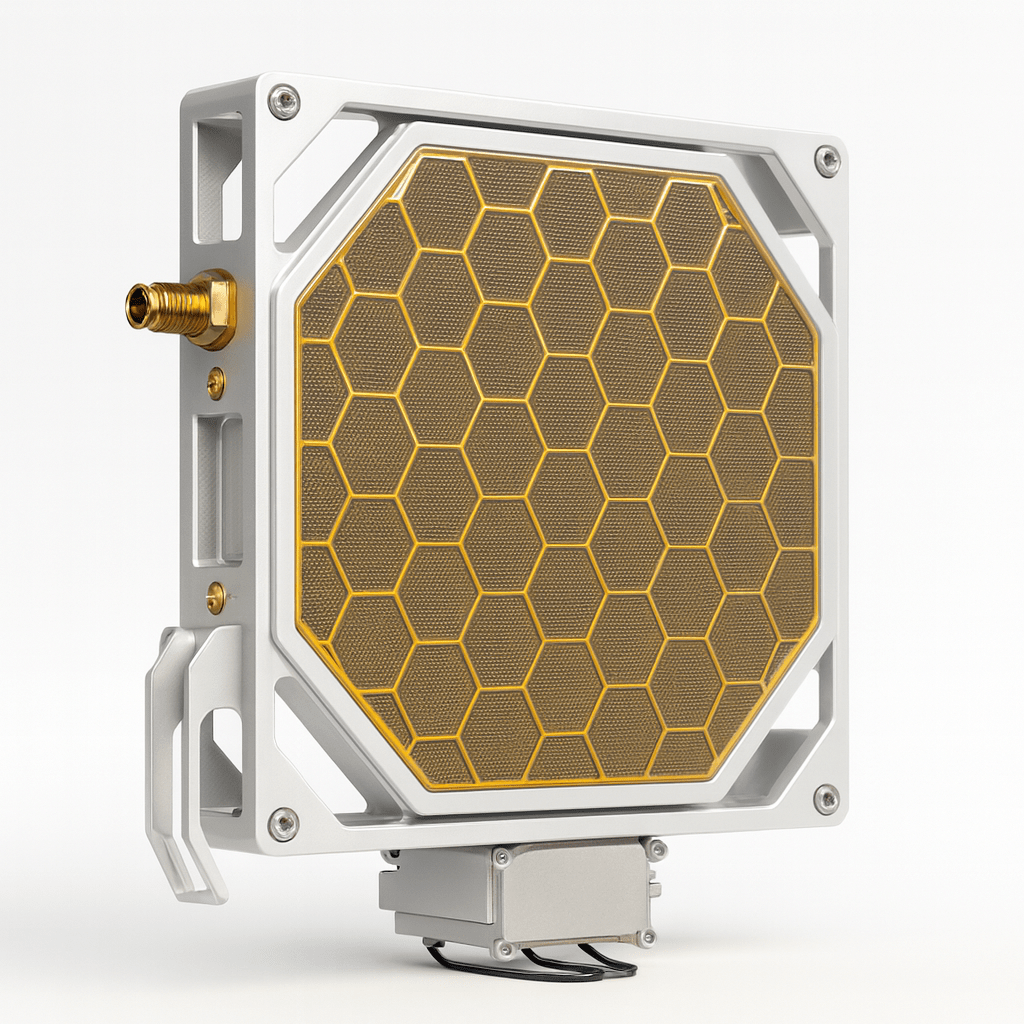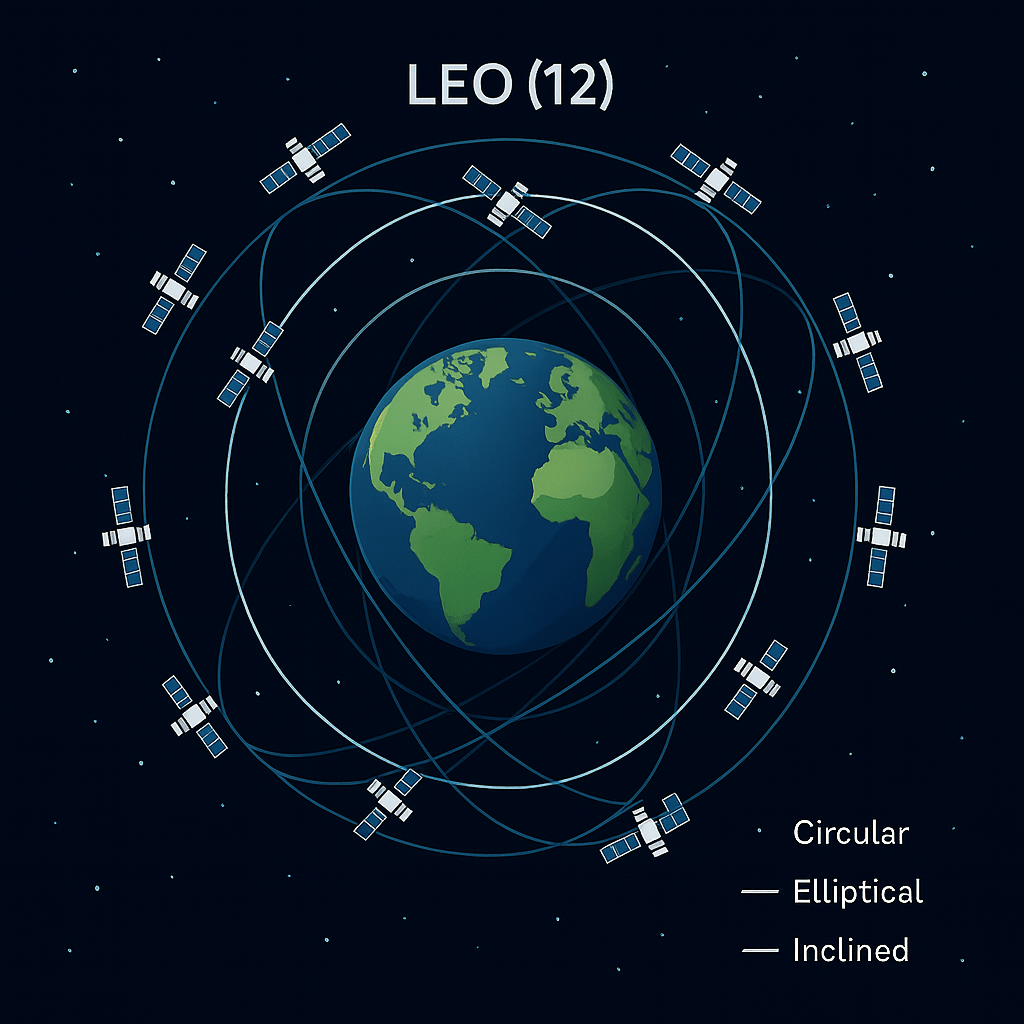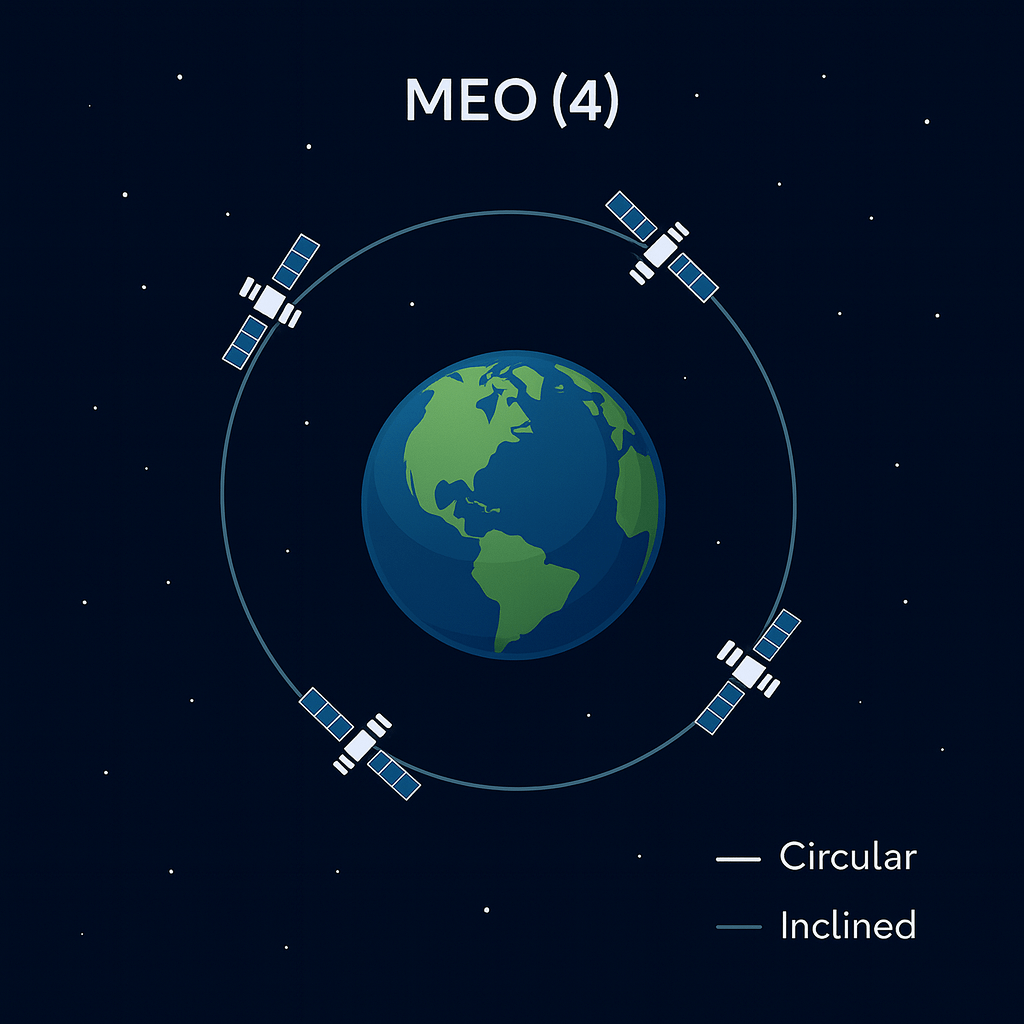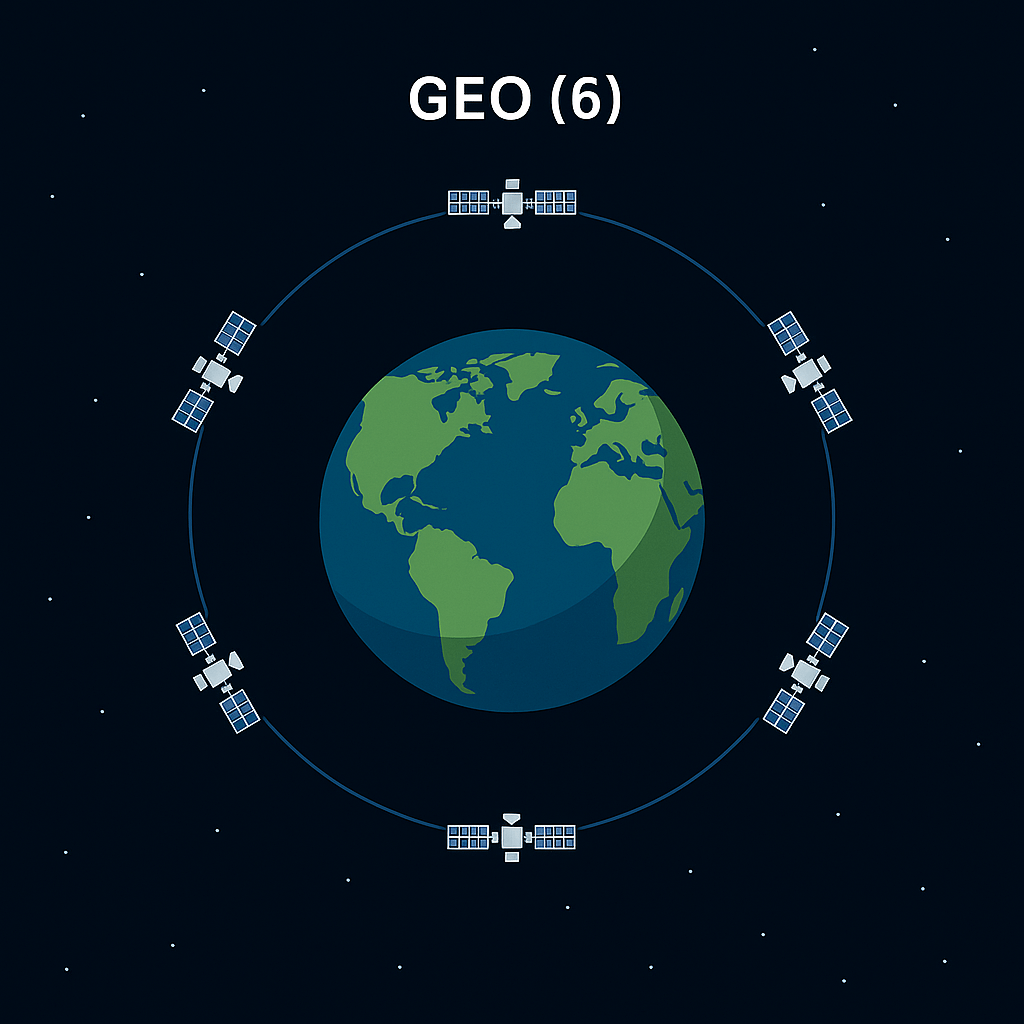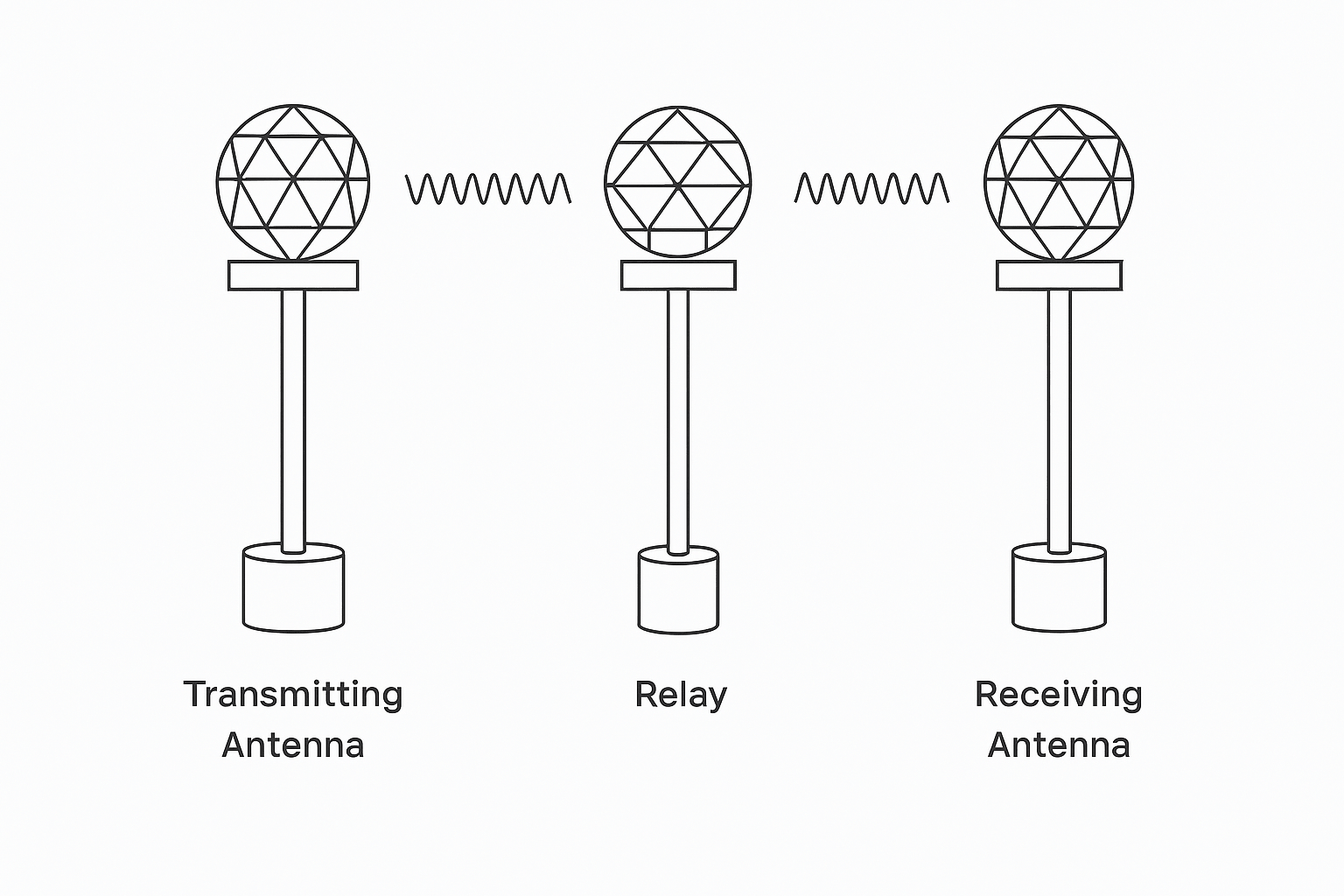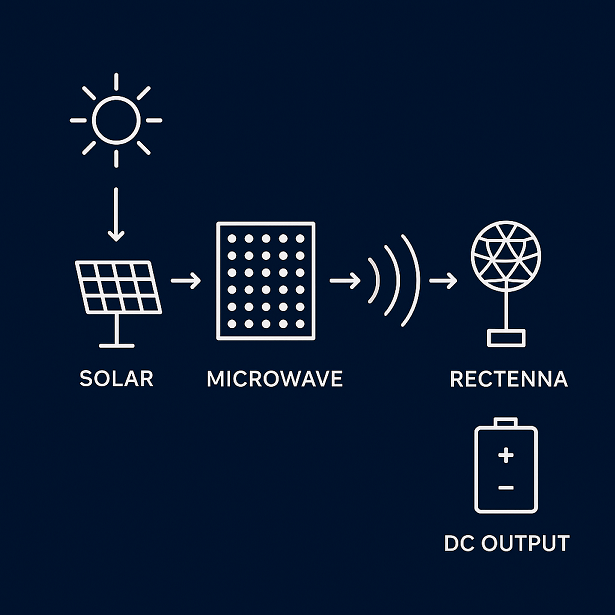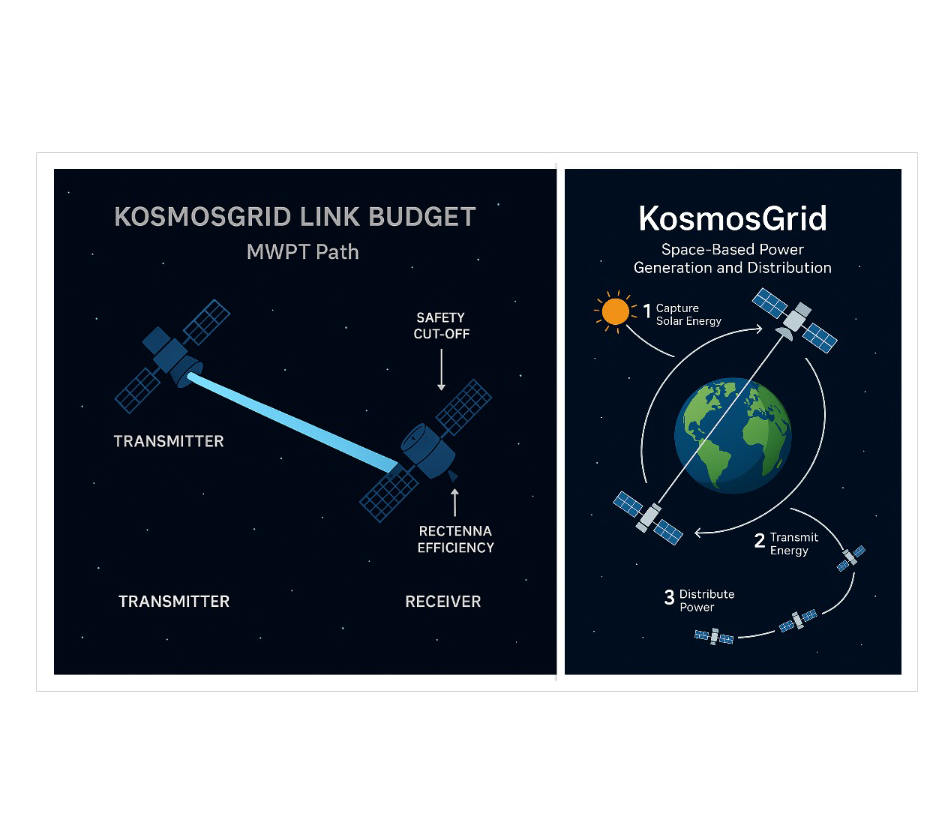
KosmosGrid
KosmosGrid is KosmosOne’s flagship space-based power generation and distribution platform. It consists of a multi-orbit constellation of dedicated “power satellites” that collect solar energy and wirelessly transmit it to other spacecraft.
In-Orbit Power Sharing: Charge satellites in eclipse; extend life without oversizing batteries
Emergency Backup: Reroute power around faults or debris events
Orbital Data Centers: High, steady power for compute nodes
Technology
Technology
What we build
Phased-Array Transmission: Electronically steered microwave beams-instant re-pointing, no moving parts
Rectenna Receivers (~90% RF→DC lab efficiency): Modular, rad-hard arrays convert beam to clean DC
AI Beam Tracking & RL Control: Sub-degree pointing, dynamic power scheduling, orbital maneuver & docking optimizati
Safety First: Adaptive beam interlocks, auto cut-off, regulated bands, redundant sensing
Network & Security: Global coverage with <50 ms command latency; quantum-encrypted control links
Precision Nav: ±1 m class relative positioning for formation flying and RPO
Telemetry: Real-time health, predictive maintenance, live customer dashboards
